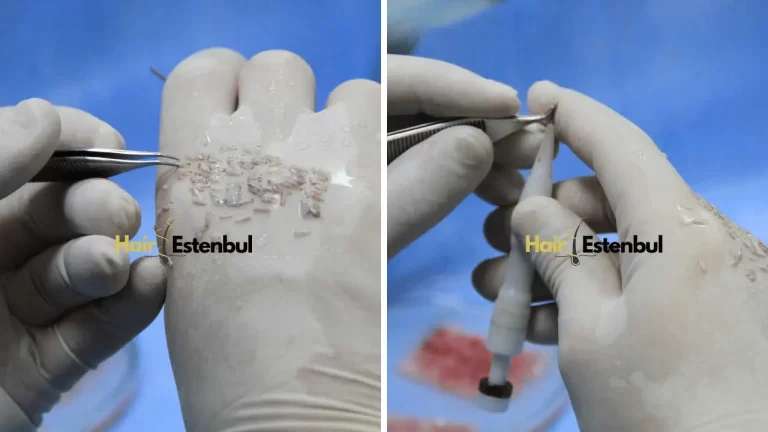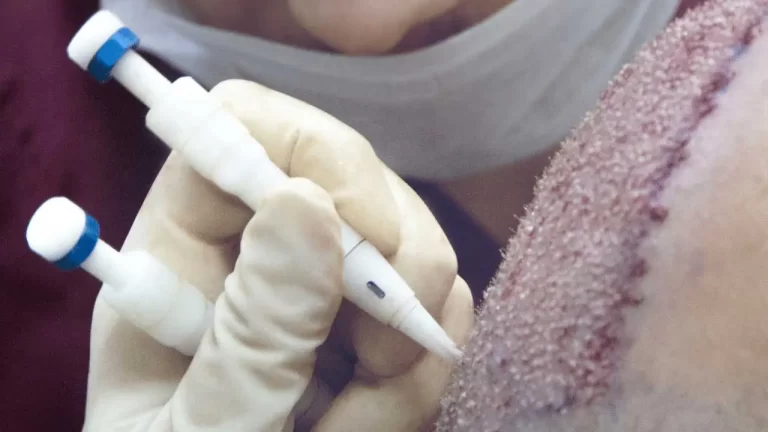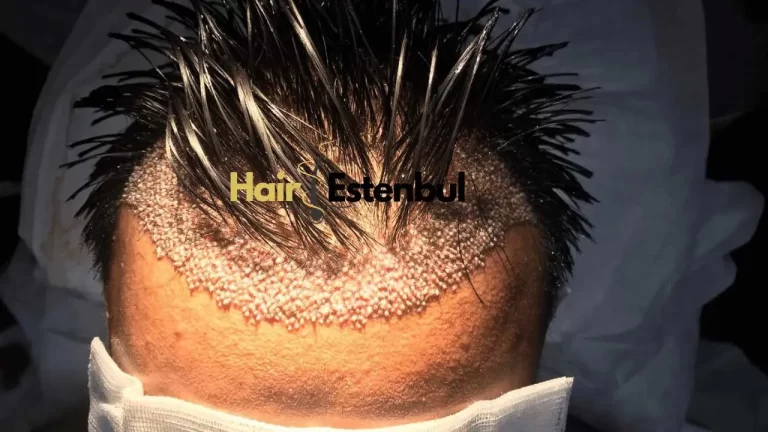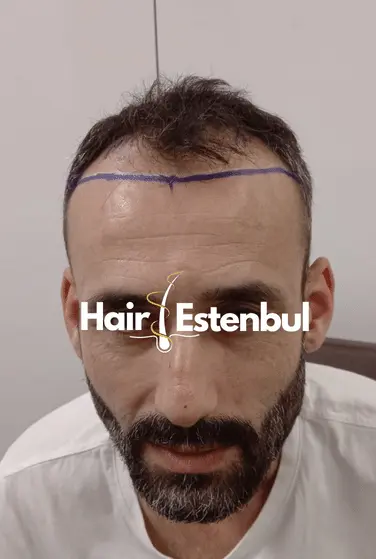DHI Hair Transplantation is a cutting-edge technique for restoring hair loss and regaining a natural hairline. This advanced method offers several advantages over traditional hair transplant procedures, making it a popular choice among individuals seeking effective and long-lasting results.
What is DHI Hair Transplantation?
DHI Hair Transplantation, also known as Direct Hair Implantation, is a specialized hair restoration technique that involves the extraction and implantation of hair follicles in a controlled and precise manner. Unlike other methods, DHI utilizes a patented tool called a Choi pen, which enables the direct implantation of hair follicles without the need for channel incisions.
How does DHI different from other hair transplant methods?
DHI stands out from other hair transplant methods due to its unique approach and advanced technology. Unlike Follicular Unit Transplantation (FUT) or Follicular Unit Extraction (FUE), which require incisions or recipient site preparation, DHI directly implants hair follicles using the Choi pen. This results in minimal trauma to the scalp, quicker healing, and a higher survival rate for transplanted hair.

Preparing for DHI Hair Transplantation
Consultation and evaluation process:
During the consultation, the surgeon discusses the patient's goals, examines the scalp, and assesses the donor hair availability. This is an opportunity for the patient to ask questions and understand the procedure in detail.
Pre-operative instructions and guidelines:
Patients receive specific instructions to prepare for the DHI procedure. These may include avoiding certain medications, discontinuing smoking, and refraining from alcohol consumption before the surgery.
What to expect during the procedure:
On the day of the procedure, patients arrive at the clinic and are prepared for the DHI surgery. The surgeon will explain the steps involved and address any concerns or questions the patient may have.
The DHI Hair Transplantation Procedure
Step-by-step overview of the DHI procedure:
Hair follicle extraction: Using a specialized tool, individual hair follicles are extracted from the donor area, typically the back or sides of the scalp. This process ensures that the hair follicles extracted are healthy and genetically resistant to hair loss.
Preparation of recipient sites: The surgeon creates tiny openings in the recipient area where the hair follicles will be implanted. The Choi pen is used to make precise and controlled incisions, ensuring optimal placement and natural-looking results.
Implantation of hair follicles: Using the Choi pen, the surgeon carefully inserts the extracted hair follicles into the recipient sites. This step requires great skill and precision to ensure proper angle, direction, and density of hair growth.
Local anesthesia and pain management:
To ensure a comfortable experience for the patient, local anesthesia is administered to numb the donor and recipient areas. This minimizes any discomfort during the procedure. Pain management options may also be provided to alleviate any post-operative discomfort.
Implantation technique and equipment used:
The Choi pen is the key instrument used in DHI Hair Transplantation. It has a hollow needle attached to it, allowing for the direct implantation of hair follicles into the scalp. The Choi pen's advanced technology and ergonomic design facilitate the accurate placement of hair follicles and promote optimal hair growth.

Benefits of DHI Hair Transplantation
DHI Hair Transplantation offers numerous benefits for individuals considering hair restoration:
Natural-looking results: The Choi pen allows precise control over the angle, direction, and depth of hair follicle implantation, leading to a more natural appearance.
Minimally invasive: DHI does not involve the creation of incisions or the need for recipient site preparation, reducing the risk of scarring and post-operative complications.
Quick recovery: The absence of incisions and minimal trauma to the scalp result in faster healing and minimal downtime, allowing individuals to resume their daily activities sooner.
High hair survival rate: The direct implantation technique used in DHI ensures a high survival rate for transplanted hair follicles, leading to long-lasting and permanent results.
Understanding Hair Loss and Candidates for DHI
Common causes of hair loss:
Hair loss can be attributed to various factors, including genetics, hormonal imbalances, medical conditions, and lifestyle choices. Common causes of hair loss include androgenetic alopecia (male or female pattern baldness), hormonal changes, stress, nutritional deficiencies, and certain medical treatments.
Who is a suitable candidate for DHI?
DHI Hair Transplantation is suitable for both men and women experiencing hair loss. Ideal candidates include individuals with sufficient donor hair on the back or sides of the scalp, as this serves as the source for hair follicle extraction. Candidates should also have realistic expectations and be in good overall health.
Assessing hair loss severity and pattern:
Before undergoing DHI, a thorough evaluation is conducted to assess the severity and pattern of hair loss. This helps determine the number of hair follicles needed for transplantation and enables the surgeon to create a personalized treatment plan.

Post-Operative Care and Recovery
Immediate aftercare instructions:
After the DHI procedure, patients are provided with detailed instructions on how to care for their transplanted hair and scalp. This may include guidelines on washing the hair, avoiding excessive sun exposure, and refraining from strenuous activities for a certain period of time.
Managing discomfort and potential side effects:
Some patients may experience minor swelling, redness, or mild discomfort following the DHI procedure. The surgeon may prescribe medications or recommend over-the-counter options to manage these symptoms and ensure a smooth recovery.
Timeline for recovery and hair growth:
The recovery period after DHI Hair Transplantation varies from person to person, but most individuals can resume their regular activities within a few days. The transplanted hair initially sheds within a few weeks, and new hair growth typically begins within three to four months. Full results, including thicker and denser hair, can be expected within 9-12 months.
Expected Results and Follow-Up
When to expect visible results:
Visible results start becoming apparent within a few months as the newly transplanted hair begins to grow. However, it's important to note that hair growth is a gradual process, and it may take several months to achieve the full outcome. Patience and adherence to post-operative instructions are key for optimal results.
Maintenance and care for transplanted hair:
Transplanted hair requires regular maintenance and care to ensure its longevity and health. This includes following a proper hair care routine, protecting the scalp from excessive sun exposure, and avoiding harsh chemicals or styling techniques that could damage the hair follicles.
Follow-up appointments and long-term monitoring:
The surgeon will schedule follow-up appointments to monitor the progress of hair growth, assess the results, and address any concerns or questions the patient may have. Regular check-ups are crucial to ensure the continued success of the DHI procedure and to make any necessary adjustments if needed.
DHI Hair Transplant Turkey Before and After

BEFORE

AFTER
Comparing DHI with Other Hair Transplant Methods
FUT (Follicular Unit Transplantation) vs. DHI:
FUT involves the removal of a strip of scalp from the donor area, which is then dissected into individual hair follicles for transplantation. DHI, on the other hand, directly implants hair follicles without the need for strip extraction. This key difference makes DHI a more attractive option for those who want to avoid a linear scar and prefer a less invasive approach.
FUE (Follicular Unit Extraction) vs. DHI:
FUE involves the extraction of individual hair follicles from the donor area using a punch tool and then transplanting them into the recipient area. While both FUE and DHI involve individual follicle extraction, DHI distinguishes itself by directly implanting the follicles using the Choi pen. This results in more precise placement and potentially higher survival rates for the transplanted hair.
Advantages and disadvantages of different techniques:
Each hair transplant technique has its own advantages and disadvantages. FUT allows for the transplantation of a large number of grafts in a single session, but it leaves a linear scar. FUE avoids scarring but may be more time-consuming and result in a higher transection rate of hair follicles. DHI offers a scar-free procedure with precise follicle implantation, but it may require more time and expertise from the surgeon.
Frequently Asked Questions about DHI Hair Transplantation
Can DHI be performed on women?
Yes, DHI Hair Transplantation can be performed on women. It is an effective solution for female pattern hair loss, thinning hair, or receding hairlines. The suitability of the procedure depends on individual factors, which can be assessed during a consultation with a hair transplant specialist.
Is DHI suitable for treating different types of hair loss?
DHI Hair Transplantation is suitable for treating various types of hair loss, including androgenetic alopecia, alopecia areata, and traction alopecia. However, the success of the procedure depends on factors such as the extent of hair loss, donor hair availability, and the individual's overall health.
What is the cost of DHI, and is it covered by insurance?
The cost of DHI Hair Transplantation varies depending on factors such as the extent of hair loss, the number of grafts required, and the clinic or surgeon performing the procedure. It is important to consult with a hair transplant specialist to obtain an accurate cost estimate. In general, hair transplant procedures are considered elective and are not covered by insurance.
DHI Hair Transplantation is an advanced and effective technique for restoring hair loss and achieving natural-looking results. Its unique approach, utilizing the Choi pen for direct follicle implantation, sets it apart from other hair transplant methods. With its benefits, minimal invasiveness, and high hair survival rate, DHI has become a preferred choice for individuals seeking a permanent solution to hair loss.
If you have further inquiries or would like to schedule a consultation, please contact us at Contact Page. Our team of experts is dedicated to helping you achieve your desired hair restoration goals.

